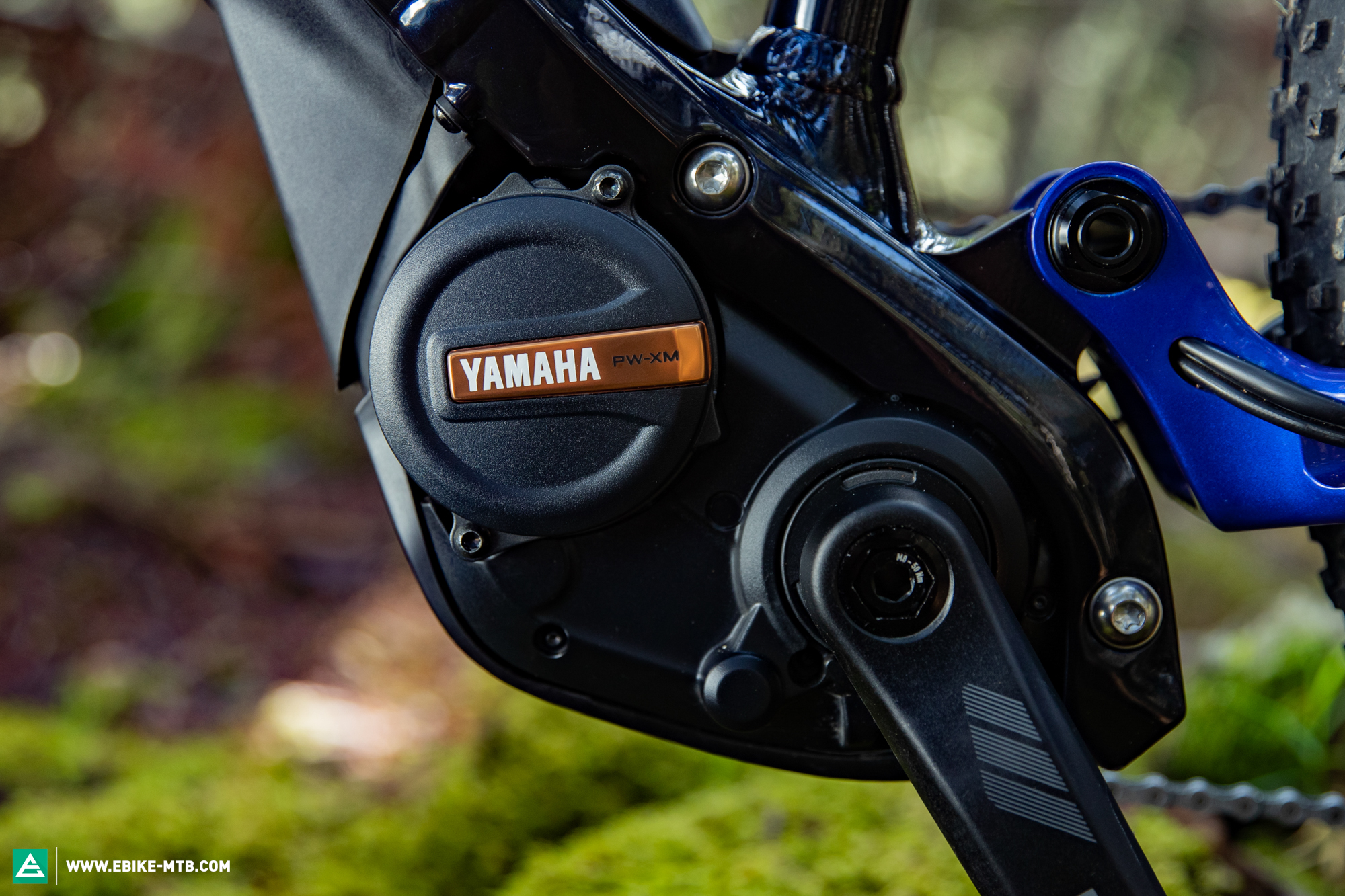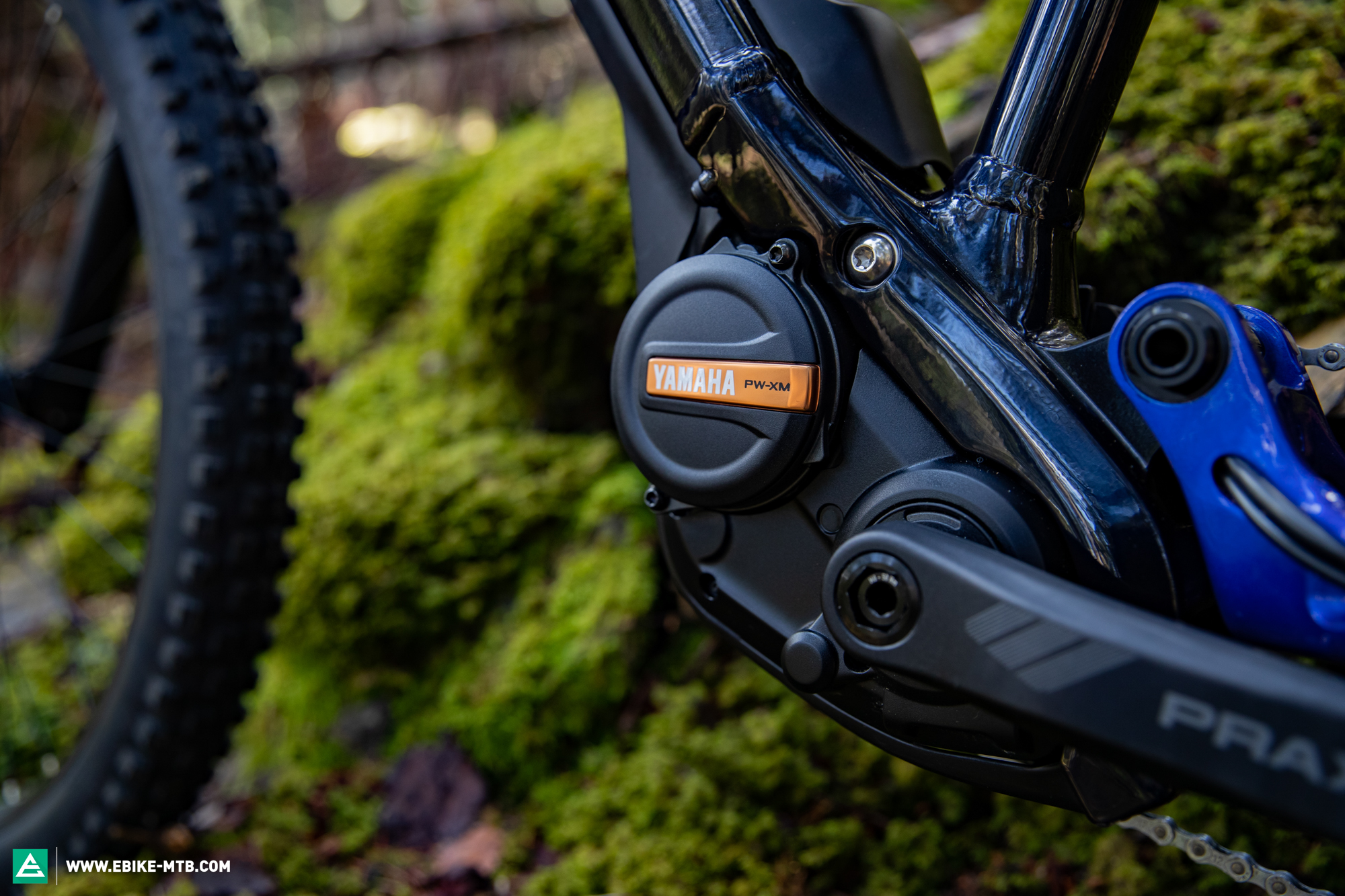Facelift or next-generation? – Yamaha unveil their new PW-XM motor for 2024
For MY 2024, the Japanese tech giant has introduced the new Yamaha PW-XM motor. The new eMTB drive is aimed primarily at the premium segment and should convince above all with its low system weight. Here’s everything you should know about the new PW-XM motor!

With the new PW-XM, Yamaha have unveiled the flagship motor for the 2024 season, which was designed specifically for sporty E-MTBs. While the Japanese manufacturer is announcing their latest flagship motor as the latest “ultra-light” e-drive wizardry, upon closer inspection you’ll ask yourself what’s actually new about it. At first glance, the PW-XM model looks confusingly similar to its predecessor, the PW-X3. The biggest difference is that the motor housing is made of magnesium rather than alloy, reducing weight by 150 g compared to the current PW-X3 variant and bringing the total weight to 2.6 kg. Yamaha’s engineers also improved the heat dissipation, which, together with the lower system weight, should allow the motor to perform better even under heavy loads. Like its predecessor, the new PW-XM churns out 85 Nm of torque which, according to Yamaha’s own statement, makes it the motor with the highest torque-to-weight ratio in their entire portfolio. And this makes perfect sense, because the latest iteration lost 150 g over its predecessor, but this still doesn’t make it more powerful. Moreover, it shares the same mounting points as the PW-X2 and PW-X3, allowing bike manufacturers to create three different bikes using the same frame platform. Thanks to several high tech sensors and Yamaha’s proprietary Zero Cadence Technology, the PW-XM offers an automatic mode that’s supposed to ensure a powerful yet natural ride. However, this news isn’t really news, because Yamaha already used the automatic mode on their previous PW drive. Another popular feature is the push assist, which, as the name suggests, assists the rider in technical hike-a-bike sections.

Battery and display compatibility for the new Yamaha PW-XM
The new Yamaha PW-XM is compatible with the components of the existing system, meaning that it can be combined with all Yamaha displays and batteries, like the Interface X system communication unit, which consists of a compact remote and minimalist LED display that shows the current support level and battery charge status. As far as batteries go, Yamaha offer a total of 6 different models, including three integrated models with 400 Wh, 500 Wh and 600 Wh capacity, which are particularly suitable for e-mountain bikes.
Big news? Actually not! With the new PW-XM, Yamaha have simply face-lifted the current PW-X3 drive and sent it into the new season with a new, lighter magnesium housing. While the lower system weight and improved heat dissipation will definitely bring some improvements to the trail, the PW-XM is definitely not a new motor. Unfortunately, the drive’s existing weak points haven’t been addressed and as a result, the Japanese manufacturer still lags behind the competition in terms of connectivity and integration.
For more information, visit yamaha-motor.eu
Did you enjoy this article? If so, we would be stoked if you decide to support us with a monthly contribution. By becoming a supporter of E-MOUNTAINBIKE, you will help secure a sustainable future for high-quality cycling journalism. Click here to learn more.
Words: Mike Hunger Photos: Manufacturer








